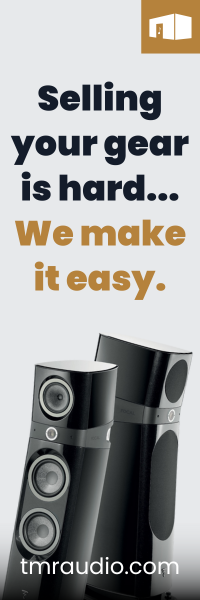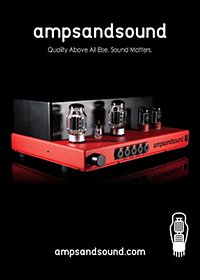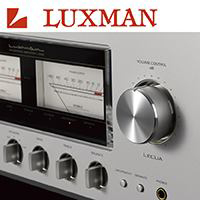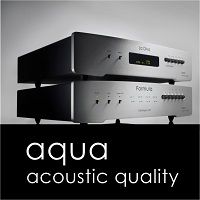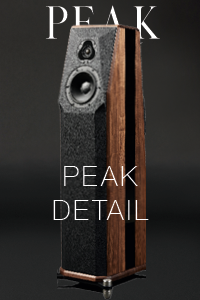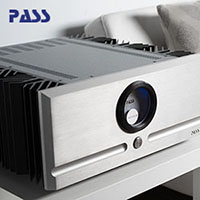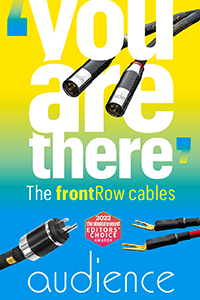 Vinyl’s resurgence notwithstanding, none of my twentysomething friends own a turntable. Yet they’ve all got a Mac Mini. And just as my friends like to argue about what turntable/cartridge combo reigns supreme, I’ve overheard younger music lovers debate what music player makes for a superior experience on the Mac Mini—as well as what hard drive sounds best and what memory configuration proves superior.
Vinyl’s resurgence notwithstanding, none of my twentysomething friends own a turntable. Yet they’ve all got a Mac Mini. And just as my friends like to argue about what turntable/cartridge combo reigns supreme, I’ve overheard younger music lovers debate what music player makes for a superior experience on the Mac Mini—as well as what hard drive sounds best and what memory configuration proves superior.
All of which might explain why these Gen Y listeners were excited to see the CEntrance DACmini CX. Built to the same dimensions as a Mac Mini, this silver box makes a ton of sense for anyone craving high performance in a compact cabinet. If you’d like even fewer boxes cluttering up your living space, CEntrance makes an alternate version that incorporates a Class-D power amplifier. That’s another review for another day.
Versatile Midget
Akin to prior Mac Minis, the DACmini CX is fed via a wall wart. Should you lose the latter, anything will do as long as long as it yields 9-19 VDC (the included supply produces 19VDC). Nice touch. The unit gets up and rolling in 30 seconds, offering USB, Coax, and Toslink digital inputs along with a single analog input—the key to the device’s viability. The RCA/SPDIF digital input accommodates sources up to 24bit/192khz while the USB is, for the moment, limited to 24/96. A headphone jack helps make the box a highly versatile option in a main or second system.
For the main digital source, I used a MacBook Air via an AudioQuest Diamond USB cable and rustled up an old reliable CD player, the Pioneer 563 via SPDIF, to keep within the product’s budget-minded parameters. A pair of Vandersteen 1C speakers and a vintage Adcom 535 comprised the rest of the system; Audeze LCD-2 headphones were employed for headphone listening.
I waited a full 24 hours to begin serious listening sessions. An old-school audiophile, I remain amazed at what great sound comes from this tiny box. Take the title track from Bad Boy’s Private Party. I’m impressed at the amount of separation that shines through between the multiple lead guitars, particularly given that the record is a marginal remaster. Audio Fidelity’s reissue of Bad Company’s debut presents an even bigger surprise. The opening cymbals on “Ready for Love” fade out with a delicacy that I expect from a fancier digital front-end.
Sticking with the bad bad bad theme, Badfinger’s Straight Up admirably conveys the disc’s analog mastering, showing off harmonies and maintaining spaciousness that otherwise sounds cloudy via budget DACs. Or marvel at the textures in guest singer Wendy Lewis’ vocals on the Bad Plus’ For All I Care. Whether it’s Wendy Lewis or Wendy O Williams, the DACmini CX possesses a realism and tonal richness that always suggests performance in line with that of more expensive hardware. Not that the box can work wonders. Paul Simon’s So Beautiful, So What sucks no matter the conduit. It’s no fault of the DACmini CX; it’s just an awful album.
Jazz standards also signal significant acoustic texture and body, along with smart sense placement within the soundstage. Miles Davis’ Live in Europe 1967? Absolutely riveting. Davis’ signature horn stays way out in front of the speakers, with the rest of the band spread out behind him. This record stands as an excellent test of pace, the rapid-fire drum rolls never getting lost in the mix as Davis hypnotizes. And the bass groove remains thoroughly locked in place.
Hi-Res Reveals More
High-resolution tracks cast the DACmini CX in an even better light. Taking advantage of albums downloaded from HD Tracks and 24/96 files captured from LPs—the latter converted at TONEAudio with the Nagra LB Pro 2 track machine—music came even more alive. HDT’s version of Fleetwood Mac’s Rumours simply rocks. Sure, we’ve all heard “The Chain” too many times, but the song epitomizes bass dynamics, and the DACmini CX offers more than enough resolution to easily discern the differences between standard and high-res versions.
Headphone listening is equally enjoyable. The LCD-2s are my go to ‘phones, and there’s more than enough power on tap to drive them to damaging levels. The Grado PS 500s also result in a great match, with smooth tonal balance and plenty of bass grip. Even the notoriously tough-to-drive AKG 701s do not pose a problem for the headphone section. If you don’t control your whole system with the DACmini CX, it makes for a killer bedroom system, with minimal footprint, regardless of digital source.
As much fun as my new, younger friends had putting this DAC through its paces with myriad headphone and music player combinations, using it as a full-function preamp is where it’s at—along with two turntables and a microphone, of course. It drove every power amplifier with which it was paired.
Go to 11
A tweakophile, I couldn’t resist the urge to connect the DACmini CX to a Red Wine Audio Black Lightning battery power supply. Here’s some advice: For those wanting to take the DACmini CX further, toss the wall wart. It’s always a great idea to keep such little switching power supplies away from your audio gear, and adding the clean power supplied by the Black Lightning enhances the listening experiences. Backgrounds grow even quieter, with more low-level detail—especially on high-res files of acoustic music, giving the overall presentation a more natural, organic feel. Lovely.
 Additional Listening: Jeff Dorgay
Additional Listening: Jeff Dorgay
Since everyone and their brother seems to make a cheeseball DAC in $500 range, it’s nice to see a company with major engineering talent bring a product like the DACmini CX to market. A digital brainiac, CEntrance principal Michael Goodman has done work for Mackie, Alesis, Harman Pro, and Benchmark, to name a few. He’s quoted in ProSound News Europe as “the one they call in when someone can’t crack a tough problem.”
Popping the top of this unit reveals attention to detail you might expect from a manufacturer such as dCS, or Vitus. The layout is impeccable. I’d love to see better rubber feet on the bottom, similar to those on the Wadia 1, but that’s about it.
I have zero complaints with the sound, and applaud the decision to include an analog input, which elevates the device from merely great to outstanding. Should the urge arise, you can add a phonostage and turntable, which is what I did for half of my listening. Plugging in the Rega RP3/Exact via an EAR 834P functions as a can’t-miss combination through the Conrad Johnson MV-50C1 and Polk Audio LSiM707 speakers. Indicative of its robust output stage, the DACmini CX suffers no fatigue driving a 15-foot pair of cables to the power amp.
The unit’s overall sound is very neutral. And the match with the CJ amp is scintillating—but remember, I prefer things ever so slightly on the warm side. For $795, a budding music lover/audiophile can fit one of these in the budget without going broke. I am proud to award the CEntrance DACmini CX a Publisher’s Choice Award for 2011. Is there a better building block with which to start a system?
www.centrance.com





